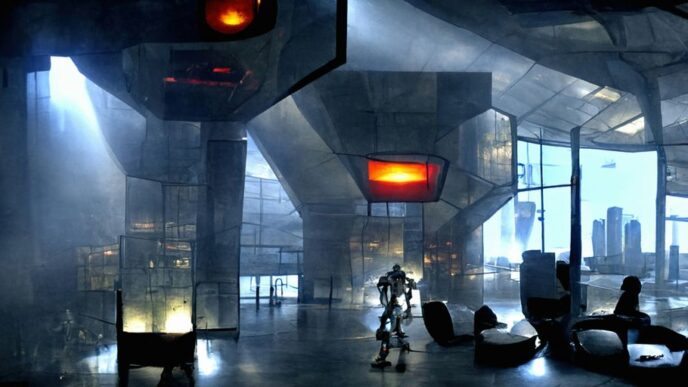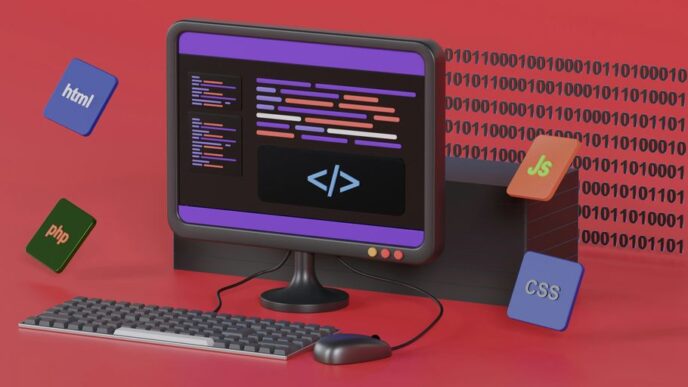Gaming has come a long way since the days of Pong and Space Invaders. With advancements in technology, we’ve seen graphics become more realistic, games become more immersive, and gameplay become more complex. This is the place for spatial computing. A game-changing technology that is set to break boundaries like never before. In this blog post, we’ll explore what spatial computing is all about and how it’s going to transform the gaming industry in ways you’ve never imagined!
Introduction to Spatial Computing
The term “spatial computing” is still relatively new and therefore can mean different things to different people. In general, spatial computing refers to the use of computers to process and interact with data in three dimensions (3D). This includes everything from creating 3D models and simulations to virtual reality (VR) and augmented reality (AR).
With the advent of powerful graphics processing units (GPUs), spatial computing has become more accessible than ever before. This has led to a boom in the gaming industry, as developers are now able to create immersive, realistic worlds for players to explore.
However, spatial computing is not just limited to games. With the help of VR and AR technology, businesses are now able to train employees in simulated environments, reducing the need for expensive equipment and travel. Architects and engineers can also use spatial computing to create realistic models of their projects, allowing for better planning and execution.
Spatial computing is a versatile tool that can be used for a variety of purposes. As the technology continues to develop, we can expect even more innovative applications in the years to come.
How Will Spatial Computing Impact Gaming?
One of the most promising applications for spatial computing is in gaming. With the ability to track a player’s movement in three-dimensional space, developers can create immersive experiences that are more realistic and interactive than ever before.
While still in its early stages, spatial computing has the potential to revolutionize gaming as we know it. Here are just a few ways it could impact the industry in the years to come:
Increased immersion and interactivity: With spatial computing, gamers will be able to physically interact with their game environment in a way that is not possible with traditional input methods. This could lead to a more immersive and realistic gaming experience overall.
New genres of games: The increased immersion and interactivity afforded by spatial computing could open up entirely new genres of video games that are not possible with current technology. We could see games that require players to move around large physical spaces or ones that involve real-world objects as part of the gameplay.
More accessible gaming: Spatial computing could also make gaming more accessible for those with physical disabilities or limited mobility. Games that require manual dexterity or perfect timing may be more playable for those with impairments.
Greater Social Interaction: Gamers can interact with other players in new and exciting ways thanks to spatial computing. For example, MR allows players to see and hear each other while they are playing, making it possible for them to communicate and strategize in real time.
More Realistic Graphics: The increased processing power of today’s computers makes it possible for developers to create incredibly realistic graphics. This is especially true for VR, which relies on high-end graphics cards to render 3D worlds.
Improved Audio: Spatial audio is another area where VR excels. By simulating sound in three dimensions, VR headsets can make it feel like you’re really there, whether you’re exploring a virtual world or shooting at enemy targets.
Popular Examples of Spatial Computing in Gaming
There are many popular examples of spatial computing in gaming. One example is the Microsoft HoloLens, which allows gamers to experience a game in a three-dimensional environment. Another example is the Oculus Rift, which provides an immersive virtual reality experience. The PlayStation VR provides gamers with a realistic 3D gaming experience.
The Limitations of Spatial Computing
The development of spatial computing is still in its early stages, with a lot of work yet to be done before the technology can be widely used. However, there are already some limitations to using spatial computing that should be taken into account.
Processing power: For one, spatial computing requires a lot of processing power and memory, which means that it is currently only available to those with high-end gaming computers. This also makes it difficult to use for more casual gamers or those who don’t want to invest in expensive hardware.
Running the Games: Another limitation is that spatial computing can be very demanding on your graphics card. This means that if you don’t have a good graphics card, you may not be able to run games or other applications that make use of spatial computing. This could change in the future as the technology develops further, but for now it is something to keep in mind.
Motion Sickness: Spatial computing can also cause motion sickness in some people. This is because the images and movements are not always synchronized correctly, which can cause issues with balance and depth perception. If you are susceptible to motion sickness, it is best to avoid games or applications that make use of spatial computing.
What’s Next in Spatial Computing and Gaming?
It’s not just gaming that will be affected by spatial computing. Any industry that relies on computers will be transformed by this technology. Architecture, engineering, and even medicine will all be changed by spatial computing.
Augmented reality games: Imagine being able to play your favorite games in augmented reality. You could be running through a virtual world, or shooting at enemies that appear in your real-world surroundings. This is already possible with current technology, but it’s going to get much better in the years to come.
Holographic games: One of the most exciting things about spatial computing is the possibility of holographic games. This would allow you to see and interact with game characters as if they were right in front of you. Microsoft has already demonstrated this technology with its HoloLens headset, and it’s only going to get better from here.
Conclusion
Spatial computing has the potential to revolutionize the gaming industry and create an immersive experience that was never before possible. As technology continues to improve, gamers can look forward to more advanced graphics, faster loading times, and a truly interactive world where boundaries don’t exist. It is an exciting time for gamers, as spatial computing opens up endless possibilities for what we can create in virtual reality.












